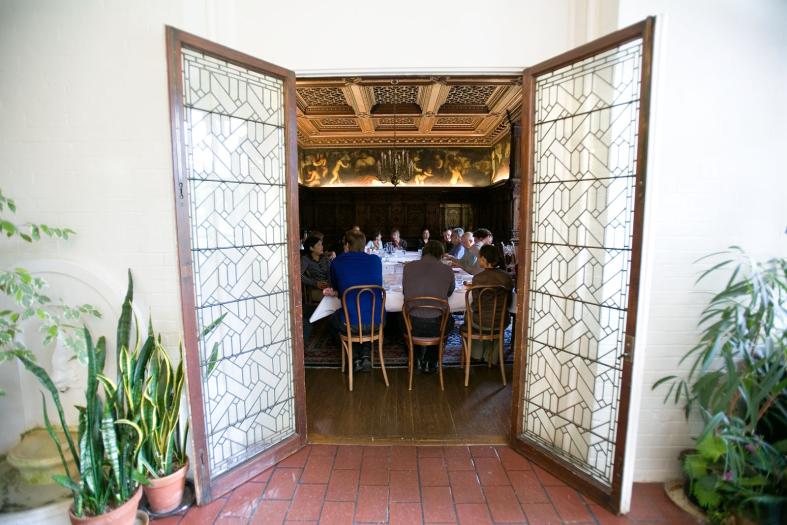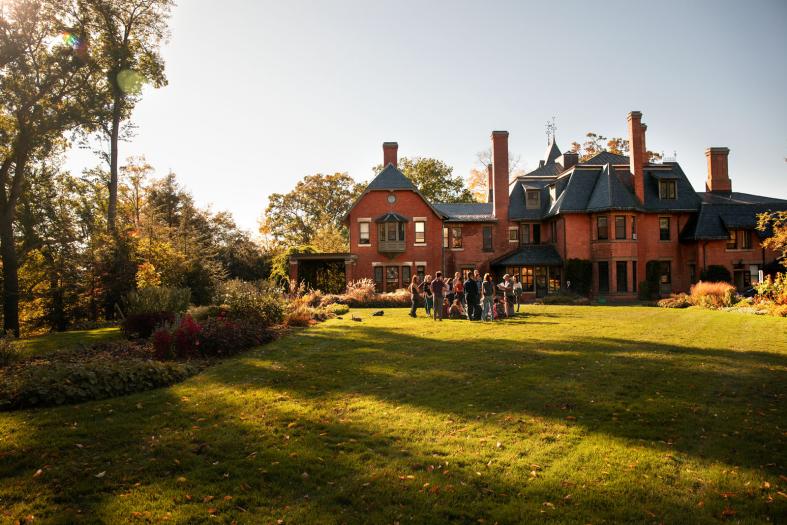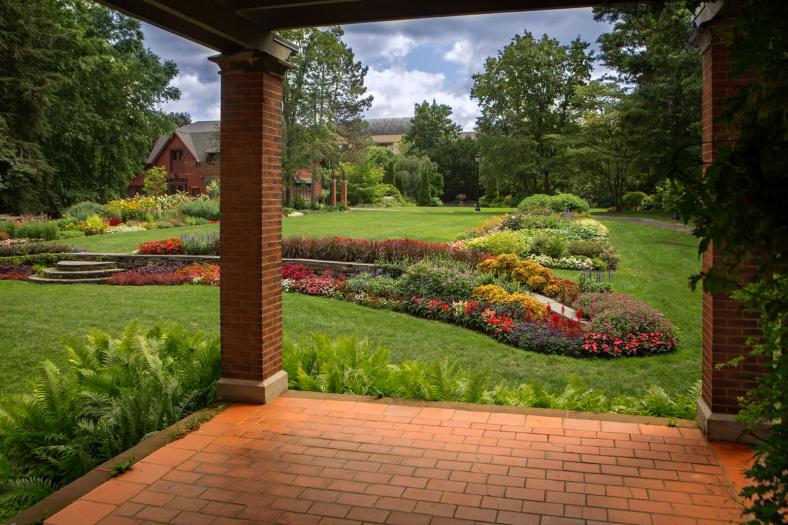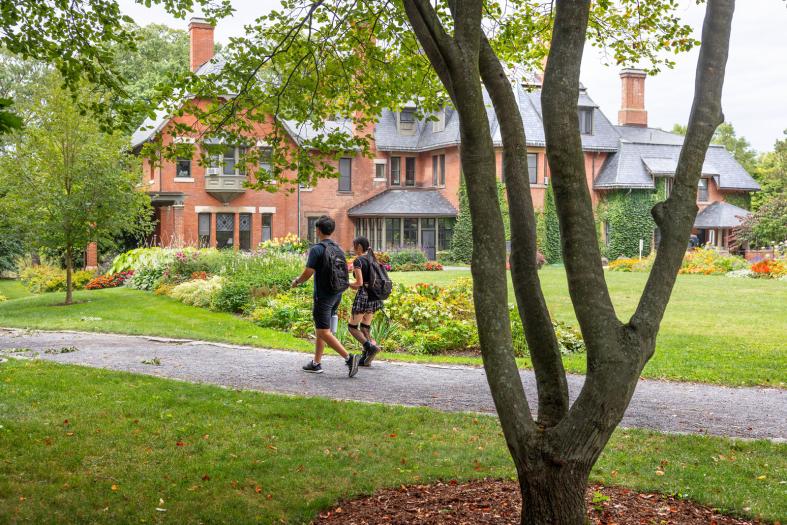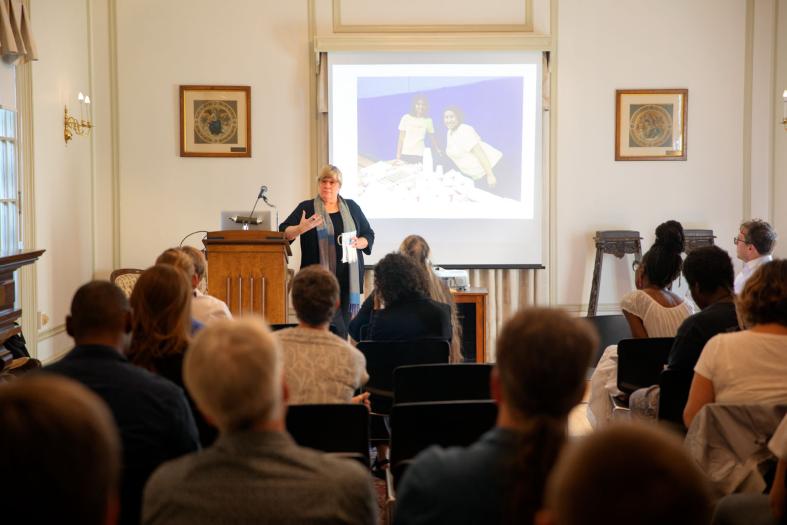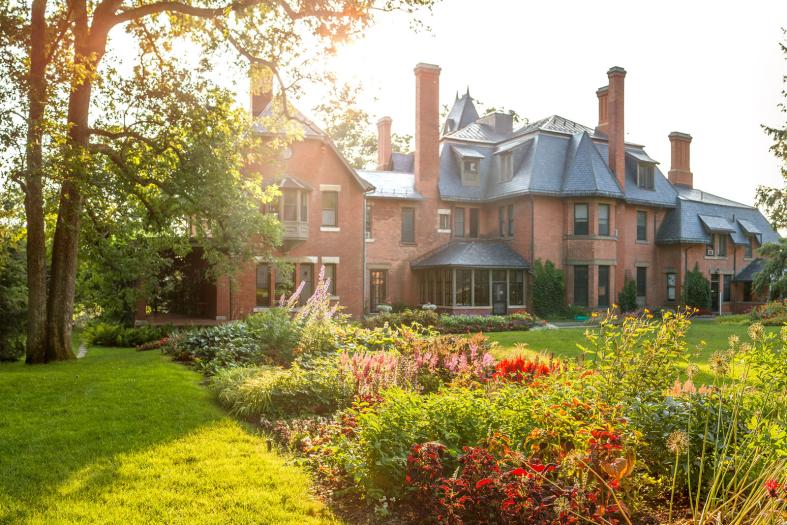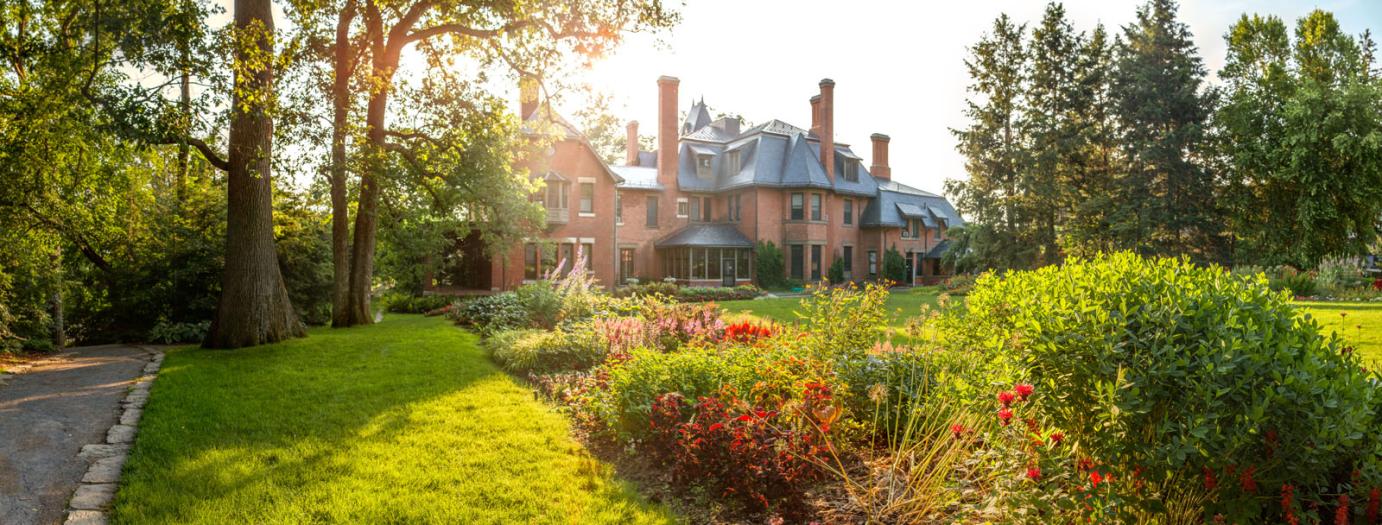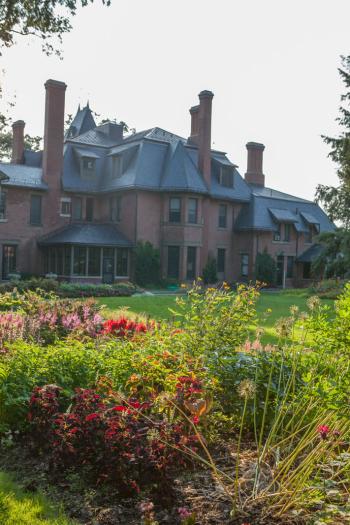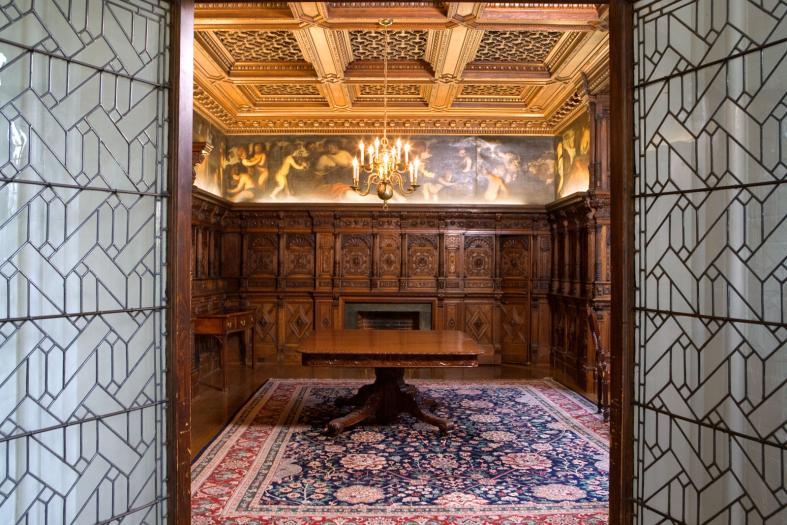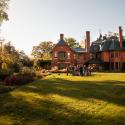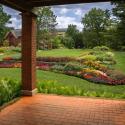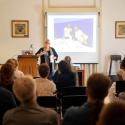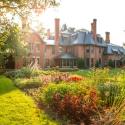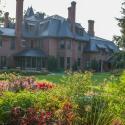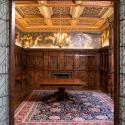A.D. White House
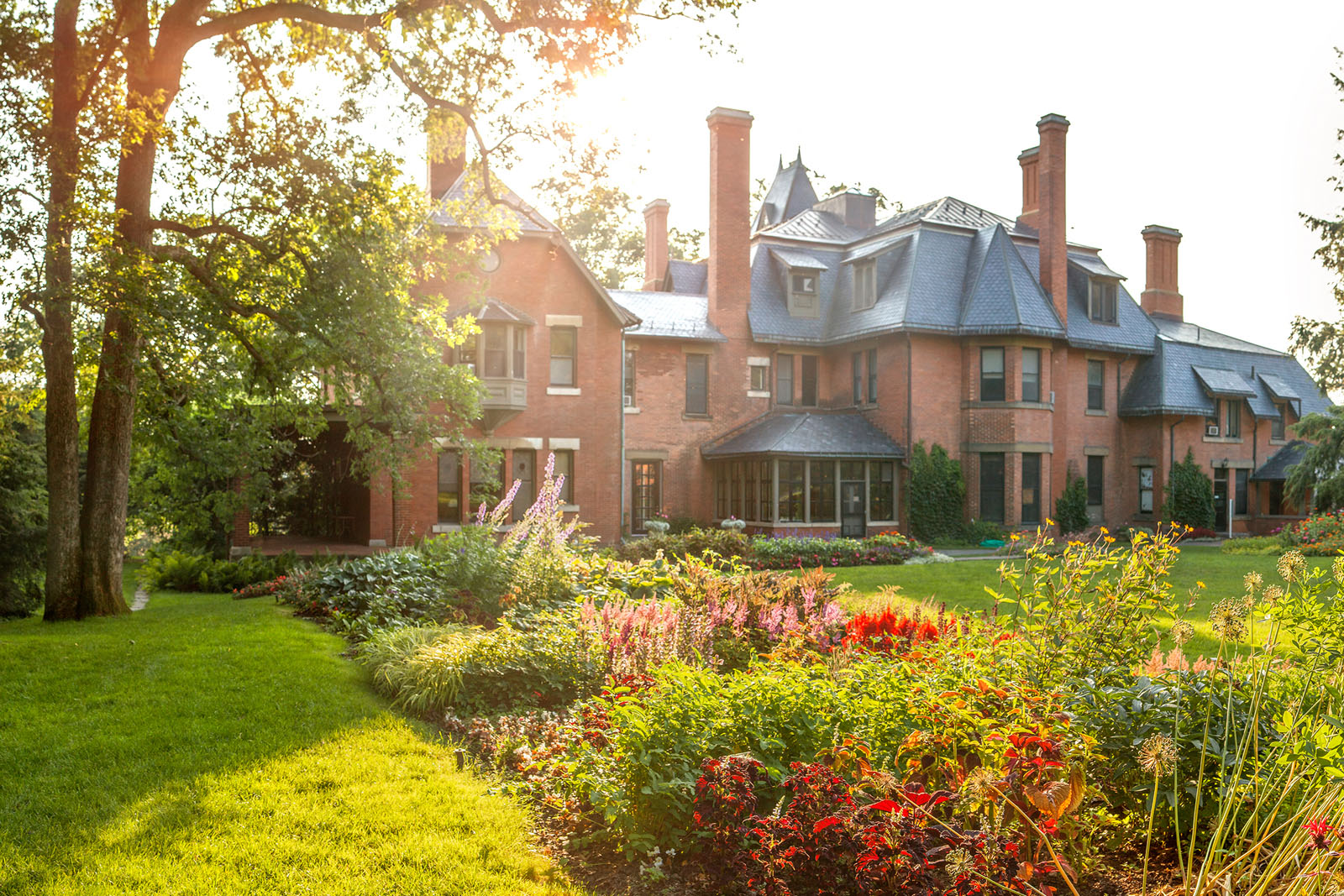
The Andrew Dickson White House is a High Victorian Gothic house on the campus of Cornell University. It houses the Cornell University Society for the Humanities.
Location
27 East Avenue, Ithaca, NY 14853
Details
The entire A.D. White House event space is subject to a capacity of 150 people total, including events using the outdoor spaces. The Guerlac Room can comfortably hold up to 50 people for lectures. No food or beverage is permitted in this room. The Dining Room can accommodate 18 guests for a seated meal. Room 110 can accommodate up to 40 guests (32 fit more comfortably - four tables with eight guests each) for a seated meal. Standing receptions are recommended not to exceed 80 guests.
The A.D. White House is fully ADA accessible on the ground floor of the building. There is an accessible entrance at the back door, as well as an accessible restroom on the ground floor.
Rental Fee
The rental fee is $2,250 for up to eight hours. There are additional charges for any staffing, catering, or rentals. Conference and Event Services will work with you on the specifics for your event to provide a full quote.
Availability
The A.D. White House can accommodate events while classes are in session:
- Mondays - Thursdays: 4:30pm-10:00pm
- Fridays - Saturdays: 8:00am-10:00pm
- Sundays: please inquire for availability.
Private events, such as weddings, are only scheduled during summer month or University breaks, as availability allows.
History
The Andrew Dickson White House was designed by William Henry Miller and Charles Babcock. The house was commissioned in 1871 by Andrew Dickson White, co-founder and first president of Cornell University.
The house’s richly decorated stone carvings intend to remind students of their accomplishments and inspire them to a higher purpose and an appreciation of beauty. White left the house to the University for the perpetual use of its later presidents. Presidents still use the study on the southeast side of the building as a retreat.
In 1953, the house was renovated for use as the University Art Museum, and its carriage house converted into what is now the Big Red Barn. It served in this role until 1973 and was considered for demolition. Henry Guerlac, Director of the University's Society for the Humanities, led the cause to prevent its destruction and have it placed on the National Register of Historic Places in 1973. The house library is now called the Guerlac Room in his honor. Since the construction of a new Johnson museum, the house has been used for offices of the Society for the Humanities.

